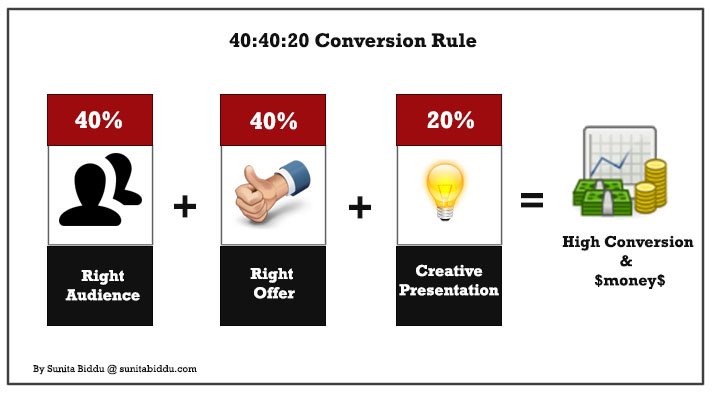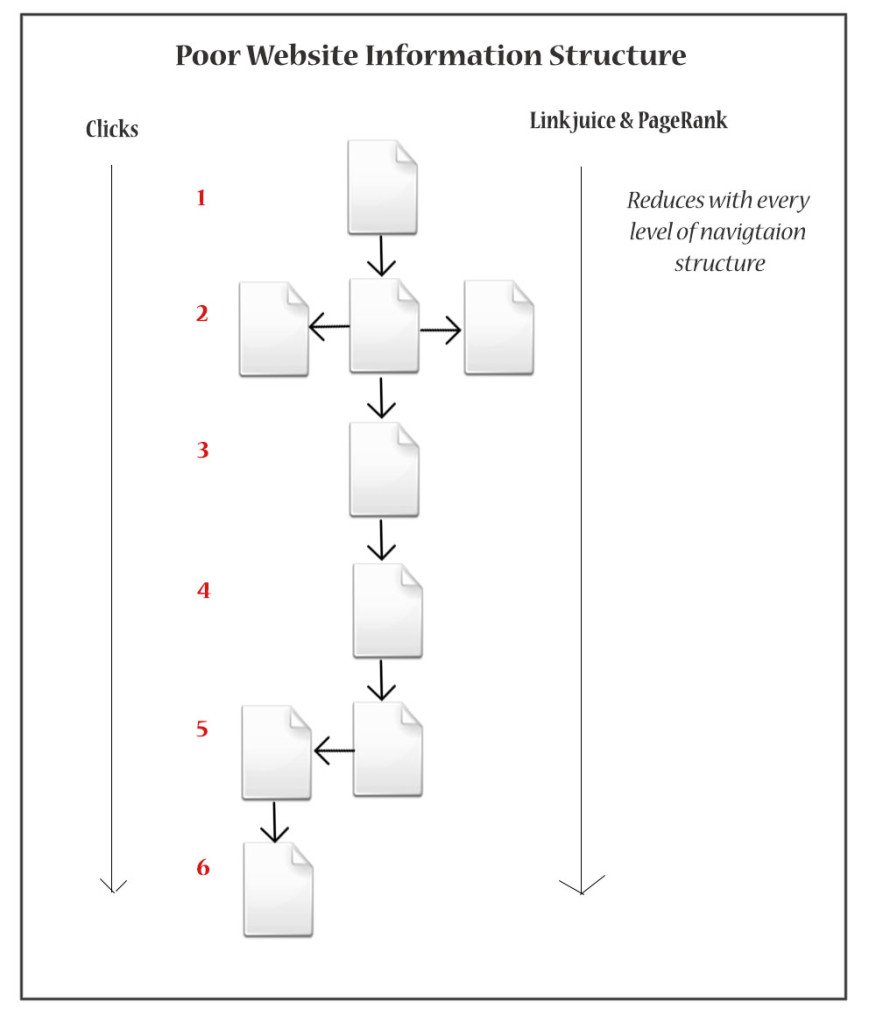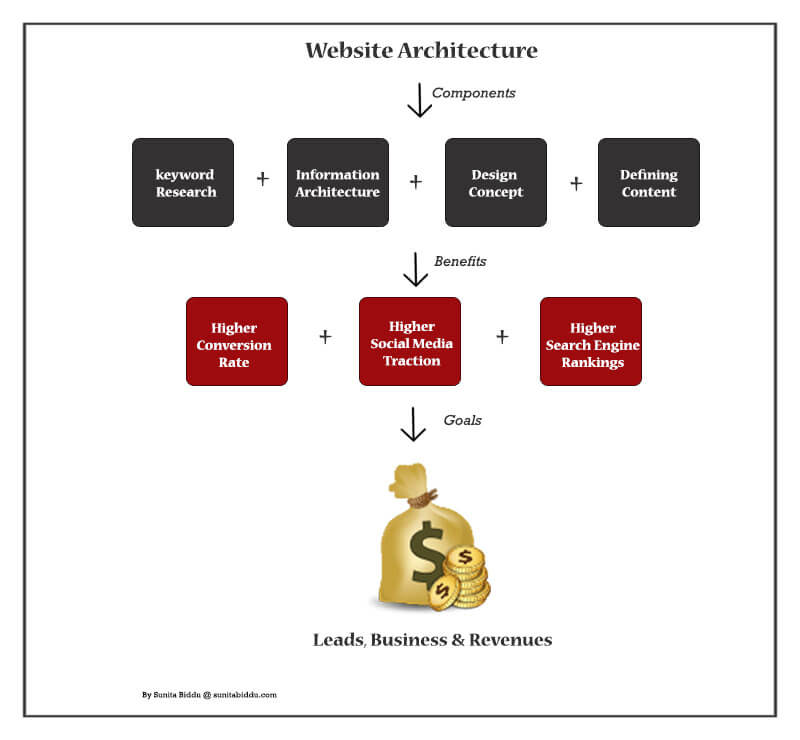Wouldn’t you want a website that nurtures sales, converts visitors to leads, leads to customers, customers to repeat business and gives you a steady stream of income? I’m talking about turning your website into a lean, mean money-making machine that speaks to your site visitors confidently on your behalf – once you implement a good website architecture.
They follow a website structure & architecture
Think of your website as a huge filing cabinet. You don’t have to worry about ordering your files (pages) if you only have a few of them. But what if you have hundreds of thousands of files – wouldn’t it make sense to find a way to categorize them so you can retrieve them later more efficiently?
Officially, we’d define website architecture as:
Website architecture is an approach to the design and planning of websites which, like architecture itself, involves technical, aesthetic and functional criteria of a web presence. As in traditional architecture, the focus is properly on the user and on user requirements. This requires particular attention to web content, SEO friendly concept, conversation rate optimization, usability, interactive design, information architecture, landing page optimization and web design. For effective search engine optimization it is necessary to have an appreciation of how a single website relates to the World Wide Web.
The Benefits of website architecture
Good web architecture begins with specific business goals and a target audience and guarantees that each element of your site compels visitors to take specific actions.
Basically, website architecture is the floor plan of how your site is built: how the pages and categories will be connected and how your navigation will lay out the information to your readers.
To create a great website that converts, website architecture
- Involves advance keyword research to make your website SEO & user friendly & create content based on the reason the visitor came (research, purchase & re-engagement
- Involves practical, professional & appropriate design concept to build up unique brand image
- Flat website navigation & information structure to make a healthy website
- Involves conversion rate optimization to convert most of your website traffic.
- Takes care of landing page content optimization of entire website
- Focuses on precise, clear & SEO friendly content design for better landing page optimization
- Emphasizes a minimalistic & responsive website design approach
- Easy scalability & expansion in future
- Realizes that a user is one click away from leaving your site & make best attempts to keep the user satisfied with his finding, mainly focusing on conversion rate optimization
- Lowers the bounce rate
Unfortunately, most websites aren’t designed to convert. Instead they are built around “our” products, rather than customers’ needs. They are build around beautiful colors and graphics, rather than a practical simple concept for each business.
A good web architecture follows the good old 40/40/20 conversion & marketing rule, which says that…

Guess where most businesses spend the majority of their time? That’s right, on the creative, because it’s more fun. But that’s not where your success will come from.
Your website should be built using the 40/40/20 rule, where…
- Each element keeps in mind your target audience and different personas;
- Multiple sales channels make a variety of offers
- Pleasing design and creativity offers unique and personalized user experiences.
Think of your visitors are the life blood of your website, where the blood vessels make up the site architecture and how pages link to one another.
Better the architecture, greater the find-ability of information and the flow of readers between pages and categories.
Components Of Website Architecture
There are 4 core components of website architecture that would ensure the highest conversion rate and ready elements for design & development and content writing professionals to work upon.

1- Keyword Research
The first step for a powerful online presence, strong website architecture & business web presence is right keywords and meaningful content. For compelling & SEO optimized content development strategy, you need the targeted keywords that your customers are already using to find solutions to their problems.
Using proper keywords that people use to search you help with navigation, content and on-page optimization. A professional web architect should be able to provide keyword research and analysis as part of their service, to help your website rank high through quality organic content.
Plus, Matt Cutts from Google recommends use of words and phrases that people are searching with. It makes sense to make your website talk in their language instead of flowery vocabulary and industry jargons.
Keeping in mind everything, the first step should deliver a set of most profitable terms, longtail terms and competitive terms to be used by content developers. The competitive terms are used in an intuitive manner like the navigation and information architecture of your website.
2- Information Architecture (Website navigation)
Good navigation is critical for both users and the search engines, by putting the most relevant content in front of users and reducing the number of clicks to find it.
A proper design flow helps users to find what they are looking for, whilst also driving them into your sales funnel.
A good website information architecture should help users to achieve their immediate goals. You need to know why they’re here, how you can communicate with them effectively and how to solve their problem.
Here is an example of good information structure:

The best site architecture helps people to get from the homepage to the deepest level of content within 3 clicks to retain the website users’ interest as well as maximum link juice.
Poor Information architecture
Here you can see how a poor architecture makes navigation difficult and prevents the pages at the bottom of the structure lay orphan and influencing the search engine rankings negatively. Moreover, these pages may not receive the desired traffic even if created well which makes them dead pages.

The problem with a “deep information architecture” is that with every level of depth you lose some link juice because search engines see these pages as less important than the content that’s just one click from the homepage. The shorter the distance between the homepage and the deepest content layer, the more link juice and SEO authority is preserved which is taken care at a flat information structure.
3- Design, Aesthetics & Functionality
A properly designed website can increase the conversion rate, happy users and the search rankings in the SERPs. The aesthetics boosts credibility and increases a user’s interest in a website. Once visitors perceive a site as being trustworthy, they will not only be more likely to use it but also share it in their social networks to bring more brand traction.
According to HubSpot,
“Landing pages and calls-to-action are the #1 reason marketers attribute to their increase in sales”. The rule of selling is “make it easy to buy”, but cool design alone won’t convert visitors into customers.
If aesthetics is backed up by solid concept and functionality factors (such as Calls to Action and landing pages), then a website become a conversion machine.
CTAs (Call to Action) should be stepping stones to a definite business goal.
An effective CTA design predicts readers’ wants, needs and objections and streamlines the user flow to increase conversions.
Every time a visitor lands on your website, they have the following questions and concerns:
- Am I in the right place?
- Do they have what I’m looking for?
- Do they have anything better if I change my mind?
- What do I do next?
Each page of your website should aim to answer these questions, which means you must reassure visitors that they came to the right place. This step of website architecture helps users find exactly what they need with seamless navigation, categories, search, etc. and give them further options like “See also” or “Related pages”.
The Right Calls To Action
Calls to Action are oil for your lean, mean money-making website. Whether your CTA is a button, a form or a link – all CTAs are supposed to do one thing: create seamless conversion paths that encourage content consumption toward a conversion.
Here are the three key attributes of a strong Call to Action:
Clarity. For users to become engaged with the website in least possible time (3-5 seconds), you must take a big problem and cut it to a specific action. Re-evaluate your Calls to Action and marketing communication to make sure that what you’re asking users to do is highly precise and specific.
Feasibility. People take action when things are really simple and there is no risk involved. Unclear or huge Calls to Action alienate people who would be ready to take small steps into your sales funnel.
Usability. Calls to actions should be tested by showing them to small groups of people and asking them to take the desired action. Testing will reveal any blockages that freeze action and make users abandon the page.
Usability is more of post-architecture step which streamlines the process as much as possible to ensure that once someone has decided to take an action, it’s very easy to follow through.
Here goes an example of one of the world’s highest converting website landing page:

3.Wireframes of Landing Pages – Practical & Minimalistic Approach
Landing pages make one major component of strong architecture and successful online presence. These are the places where you want people to take a specific action. (e.g. buy a specific product, become a member, sign-up for a newsletter, attend an event, etc.). Ideally, each page of your website should as special as your homepage to be a powerful landing page.
Good design and functionality comes with a wireframe, which is similar to an architectural blueprint. Basically, it allows the design and development team to layout the information hierarchy of a website’s purpose according to how you want users to consume the information.
Wireframing stage also allows the business owner as well as designing team to discuss the practicality of the concept, which includes visuals, color scheme, flow of information, placement of items such as photos, graphics, text, videos, navigation etc. giving a room to revise at an early stage without any hassles as compared
You may expect different styles and types of wireframes. Some ideas are given below.
Freehand drawn Wireframes

Pinterest wireframe generated by mockup tool

Colored Wireframe

4) Content Structure
The fourth component of web architecture is Content. Once we’ve laid out the strategy, it’s time to develop content that will lead prospects through our website, from the first landing page to the final purchase and re-purchase.
Before we get into details of content structure, the key to a successful business, website & conversion is Unique Value Proposition.
It’s the entire reason a prospective customer would even consider buying from you.
Within 3 seconds of arrival, your page must reveal your business value proposition that includes the offer, benefits & proof.
People engage with content when it has depth and dimension. To nurture and convert our audience, we need to create 3-D contextual and timely content that stimulates user engagement.
First…
• Develop your buyer personas
Personas are profiles of people who might use our products.
Develop content that speaks the language of each persona in a meaningful, connective way.
Personas are created from market research and demographics and allow us to find different ways to relate to our audience.
One of the smart steps is to create scenarios of how users might use our website and try to walk through the steps the visitor would take. This will help us improve the user experience by having each page doing two things:
– help a visitor accomplish one specific goal – make the next step easier to perform
• Streamline the user experience
A good site architecture ensures that people find what they’re looking – usually through a sequence of smaller steps that together creates the entire user experience.
Here are the four ways people search for information:
- Known-item (users know what they want);
- Exploratory (people have some idea of what they want and scoop for more data);
- Don’t know what they need to know (browsing a website without a specific goal in mind – a good example is researching a new product or service);
- Re-finding (looking for information they have already seen).
Once we understand how users behave on your website, we can optimize the entire flow through your pages.
By identifying Personas and creating content based on their specific needs, we’d answer “What’s In It For Me?” which will not only makes them happy, but also convert them into return customers.
The content should “speak” to different target personas, depending on their place in the purchase cycle:
• Educate users about our company, products and services (Research);
• Engage users to keep them involved and interacting with our content (Shopping);
• Encourage users through the purchasing stages (Buy);
• Embrace users after the sale (Re-purchase/Loyalty).
If you check your website and the analytics, see if your prospects searching for more information? Are they shopping? Are they ready to buy? Are they looking to re-purchase? This step of architecture focuses on developing content that address each of these stages of the buying cycle and we’ll have happy visitors that will become our trusted advocates.
My Final words
Hopefully, by now you realize the value of website architecture in your online presence and marketing strategy. This is confidently done by good SEO professionals with a strong understanding of UX & conversion oriented designs.
At times, we want to do everything on our own. However, when we expect $$$$$ you’re your business, we ought to pamper our website with appropriate strategy and planning. Hiring a professional website architect might be the wisest decision you could make for your business.
Put your website in the hands of true professionals that not only have a solid understanding of usability and web development tools, but also can leverage marketing trends, online buying patterns and everything else involved in the design and maintenance of a website.
Your business deserves more than just a static website. The online competitive market is not going to become easier so now is the right time to develop a solid site architecture that sells.
Is your website giving you enough business? Does it take your brand and goals to the next level? If not yet, it’s time to get an audit done and get the action plan to fix it. Share your website url at hello@sunitabiddu.com and I would be glad to help.

Sunita Biddu is a digital business coach and power blogging mentor helping coaches and small business owners. She helps with building a strong and profitable online presence and reputation that creates a self-sustaining business. Sunita writes on this blog once a week about easy-to-use guides and articles about business, coaching, social media and blogging. You can grab some of her free resources and ebooks from the resources section.


Very informative and well formed guide it has become! It will be helpful to anyone seeking conversion help.
Great Post Sunita. Lots of people dont know about this subject.
I’d be happy to see if this can help as many people as possible 🙂 Thanks for being a regular reader.